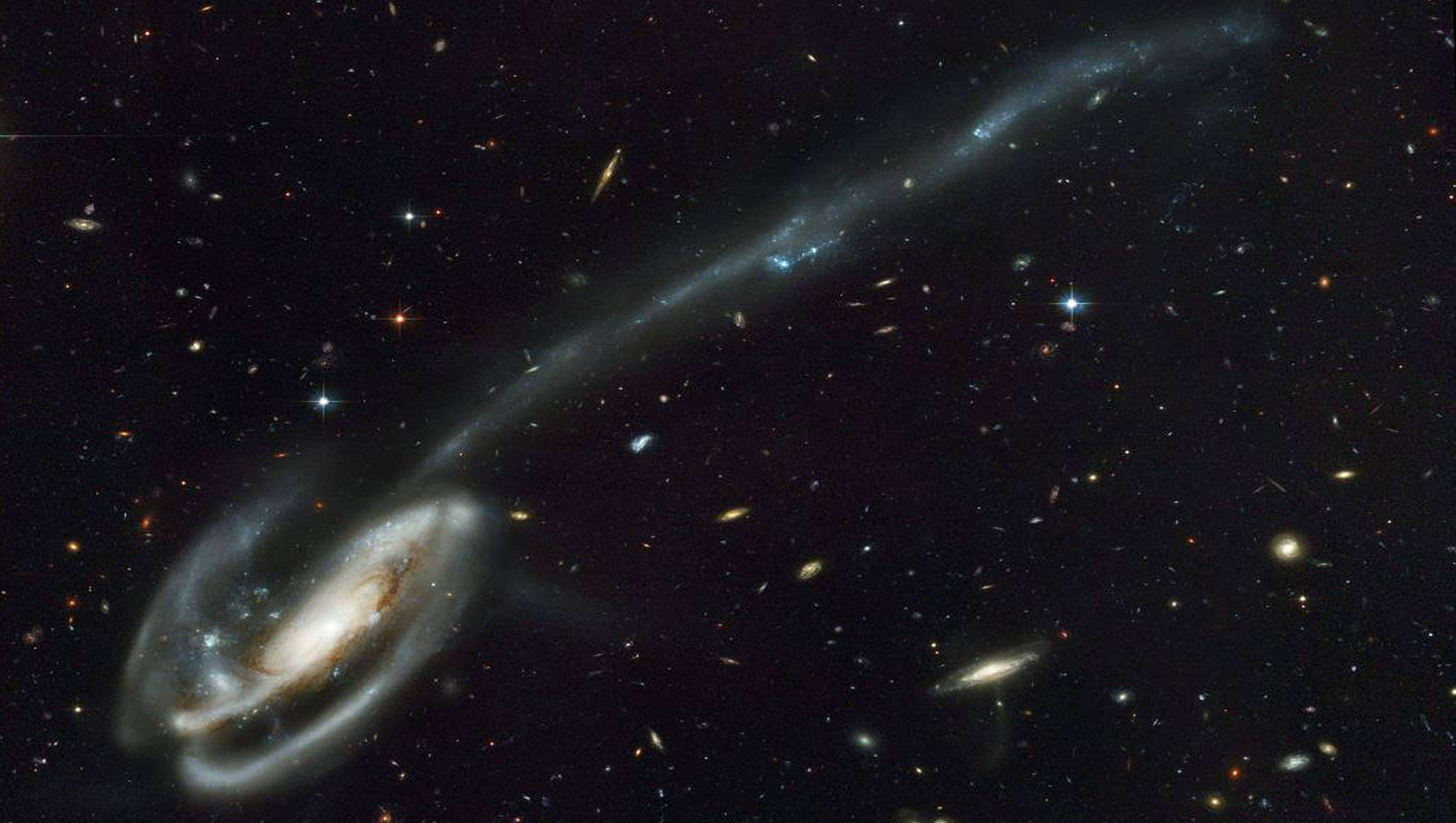Create a free profile to get unlimited access to exclusive videos, sweepstakes, and more!
There’s a two-headed snake slithering in space, and it’s made of star stuff

It looks like a snake glittering with stars, but this cosmic serpent probably came into being when two galaxies merged.
What appears to be a celestial beast in our galaxy is actually a quasi-tidal tail. Tidal tails (like the one on the Tadpole Galaxy above) are the product of two galaxies orbiting each other superfast, each being pulled in by the other’s gravity until they are drawn so close that they start to take each other apart in the process of merging. Stars and other material lost in the galactic merger are flung out into space. This newly discovered one was so interesting to Hai-Jiun Tan and his team of scientists because it has two globs of star stuff at the head and just one tail, so it was no ordinary snake.
“Oddly it only has one tail,” Tan said in a study recently published in Astrophysics of Galaxies. “Its head includes two dissolving cores, which ... are probably broken from an open cluster [of stars] ... in the same stellar population. This population is so young ... that it cannot be well explained with the classical theory of tidal tails.”
The enigmas known as tidal tails get their name from the tidal forces that spawn them, meaning the gravity that at least two objects in the universe exert on each other. Tidal forces between Mars and its moon Phobos are pulling Phobos ever closer until it is inevitably torn apart by the planet’s gravity (that won’t happen in our lifetime). When galaxies with much stronger gravitational forces interact, they strip stars and dust and gas from their outer layers as they pull each other closer and closer together. Those glowing streams that you see at either end are tidal tails. There is usually one at the head of the galaxy and one at the end, but the snake discovery is now questioning that.
Unsolved mysteries about tidal tails are still lurking in space, and the even more intriguing mystery behind the phenomenon Tan observed starts with its appearance. Whatever star cluster this tail emerged from must have gone through some intense disruptions. What exactly those disruptions were remains unknown, which is why it is referred to as a quasi-tidal tail.
Most tidal tails also have two tails, while this one has two heads — more like a head with two brains — which the scientists believe are galactic cores falling apart. With some 2,000 stars, it is more than 750 light years long and wide, but only around 260 light years thick, and its age is estimated at only around 30 to 40 million years. That makes it the youngest known tidal tail ever and opens up yet another enigma.
“The lost [stars from the two galaxies that merged] are stretched into a long tail probably due to the disruption by the galactic tidal force,” Tan said.
What could have expanded this two-headed snake up to 750 light years in such a short time? Tens of millions of years are nothing in cosmic terms. Most tidal tails are over 100 million years old, still nothing when you consider the billions of years since the Big Bang. Tan and his team believe the snake’s age may have something to do with the formation and evolution of the Gould Belt. This star-studded “belt” includes the most massive stars in the Milky Way, and formed around the same time as the snake. With the rotation of our galaxy stretching the belt from a ring into an oval over time, it is possible that an anomalous tidal tail resulted from those same disruptive forces.
Now that the mysteries surrounding tidal tails have deepened, it’s probably easier to find an actual two-headed snake slithering around.














